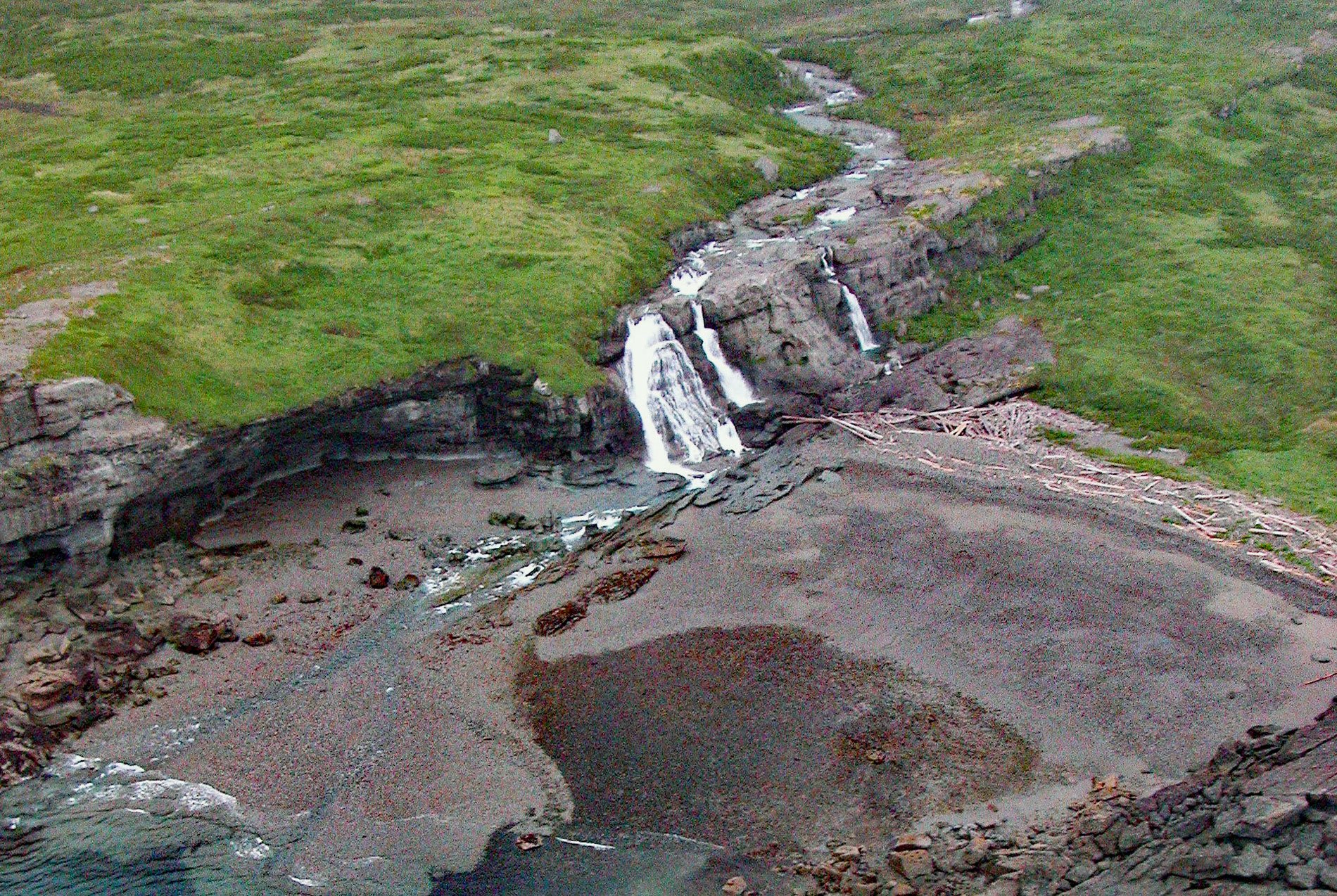Mount Douglas is a stratovolcano with an elevation of 7,000 feet (2,134 m) located on Kamishak Bay, near the northern part of the Alaska Peninsula and within Katmai National Park and Preserve, about 113 miles (182 km) east of King Salmon and 91 miles (147 km) southwest of Homer, Alaska. The summit is marked by a crater with a small lake about 525 feet (160 m) wide. The mountain was officially named in 1906 after nearby Cape Douglas based on a 1904 report by geologist G.C. Martin of the U.S. Geological Survey.
The volcano is covered by ice of the Spotted Glacier that starts on Mount Douglas and flows north for 6 miles (10 km) to a terminal lake about 1 mile (1.6 km) wide that is drained by a stream that flows for 1 mile (1.6 km) to Kamishak Bay. Much of the volcano has been subjected to glacial erosion and numerous ice and snow fields descend from the summit, with most of the meltwater draining towards Kamishak Bay. Isolated outcrops of lava flows of high-silica andesite are found within the ice and a ramp of lava on the northwest flank is relatively uneroded.
No historical eruptions have been reported for Mount Douglas; however, the presence of unglaciated lava flows and the active fumaroles indicate recent activity. There are over 100 volcanoes in Alaska, 54 of which are considered historically active. The Alaska Volcano Observatory monitors and conducts research on volcanoes in Alaska in order to better understand volcanic processes and determine the likelihood of future volcanic hazards. Read more here and here. Explore more of Mount Douglas here:

